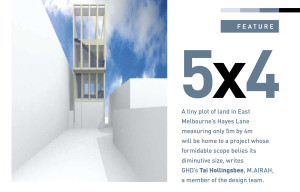Innovative Australians: Ralph Alphonso
BY Fiona MacDonald
Ralph Alphonso is showing that individuals can reduce their impact in a big way, with some planning and commitment.
On a 4 x 5m Plot down an East Melbourne laneway, Australian Geographic photographer Ralph Alphonso is attempting to build a liveable apartment on a leftover slab of land.
“I was going to build a garage or an extra room but I live here by myself and I thought, ‘Do I really need this space?'” he explains from his current living room, which has twice the floor area of his soon-to-be-built home.
When he looked for examples of carbon-neutral buildings for inspiration, he struggled to find one locally that looked at the whole picture – including where products originated from and -lifestyle.
“I found it frustrating. A lot of architects were talking about what could be done, but I wanted to actually do it. Waiting for someone else to go first isn’t my thing,” he says, with a smile.
